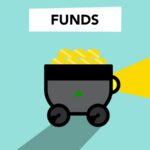The art market has long been a captivating and lucrative investment opportunity for individuals looking to diversify their portfolios. According to a Forbes article, In 2022, more than 1 million artworks showed up in auctions and two-thirds of them found buyers. However, navigating the world of art investments can be complex and requires a deep understanding of the different investment vehicles available. In this article, we will explore the 3 investment vehicles in art markets and provide valuable insights on what to know before diving in.
Before delving into the specifics, it is imperative to recognize that investing in art requires careful consideration and a certain level of risk appetite. Firstly, art is an illiquid asset, meaning that it may take time to sell or liquidate your investment if needed. Moreover, the lack of in-depth information for investors & the risk of potential fraud can be devastating. Therefore, it is essential to start small and gradually increase your exposure as you become more comfortable with the intricacies of the art market.
One key aspect to keep in mind when venturing into art investments is understanding your risk appetite. The art market can be volatile, with prices fluctuating based on factors such as artist reputation, demand trends, and economic conditions. For example, the “art market in 2022” report states that while global fine art auction turnover amounted to $16.5 billion, the fourth best annual total in history, the regional performance varied greatly. The Chinese Art Market contracted sharply, losing two billion dollars, while the American market gained one and a half billion to reach an all-time high of $7.3 billion. It is vital to understand how the regional performance will affect your portfolio & verify that you have a high tolerance for risk before committing significant capital to this asset class.
Now let’s explore some of the different investment vehicles available in the art market.
Art Funds

One option is investing through art funds, which pool together capital from multiple investors to acquire artworks as a collective entity. These funds are managed by professionals who have expertise in evaluating artworks’ potential value appreciation over time.
Another avenue for investing in art is through private or direct investments.
Direct Investments
This involves purchasing artworks directly from artists or galleries without involving intermediaries like auction houses or dealers. Buying directly from artists is called participating in the primary market & buying from anywhere other than the original source is called participating in the secondary market. Private investments offer more control over your portfolio but require extensive research and knowledge about individual artists’ potential growth.
Fractionalization

Fractionalization has emerged as an innovative way for investors to access high-value artworks without needing substantial capital upfront. Fractional ownership platforms allow investors to purchase shares or fractions of an artwork, enabling broader participation in the art market. According to this article by financial samurai, Masterworks was featured in Bloomberg in Q3 of 2020 for being a new leader in the democratization movement. At that time, they managed roughly $36 million in assets under management and had roughly 80,010 users on the platform.
When considering where to look for potential art investments, it is essential to explore reputable galleries, auction houses, and art fairs. These platforms often showcase a diverse range of artworks and provide opportunities to connect with industry experts who can offer valuable insights and guidance.
In conclusion, the art market offers a unique investment landscape with various vehicles to consider. By starting small, understanding the illiquid nature of art, verifying your risk appetite, and exploring different investment instruments such as art funds, private/direct investments, and fractionalization, you can embark on a rewarding journey in the world of art finance.





